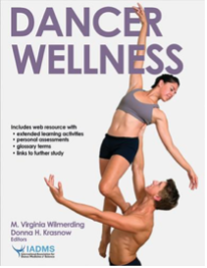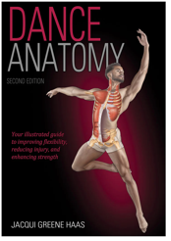Resources for Competitive Dancers
Welcome to the ICDR’s Resources for Competitive Dancers page!
Whether you are an aspiring dancer or a seasoned competitor, this guide is designed to support you on your journey to excellence. Here, you'll find a curated collection of training tips, performance preparation guides, health and wellness advice, and professional development resources. Our goal is to provide you with the tools and knowledge you need to succeed in the competitive dance world. Dive in and discover everything you need to enhance your skills, stay motivated, and achieve your dance dreams!
*To access studio-exclusive resources, please Sign In to your account and select "Resources" from the sidebar.
Injury Prevention for Competitive Dancers
“The best way to prevent disease is to be aware of the risk factors and take action to mitigate them.”
Dr. William Osler
In the high-intensity world of competitive dance, injury prevention is paramount. With rigorous training and demanding performances, dancers are at risk for various injuries. Implementing effective strategies to prevent these injuries not only safeguards dancers' health but also enhances their performance longevity. Here’s a comprehensive guide to keeping injuries at bay and ensuring a successful dance career.
Warm-Up and Stretching
A proper warm-up increases blood flow to muscles, enhances flexibility, and prepares the body for the physical demands of dancing. Dancers should start with 10-15 minutes of cardiovascular activity, such as jogging or jumping rope, followed by dynamic stretches that mimic dance movements.
Incorporate both dynamic and static stretches into your routine. Dynamic stretching should be done before dancing to improve range of motion and reduce stiffness, while static stretching post-performance helps in recovery and flexibility maintenance.
Strengthening and Conditioning
A strong core is essential for stability and injury prevention. Incorporate exercises such as planks, Russian twists, and leg raises into your training routine. A stable core helps maintain proper alignment and reduces the risk of lower back injuries.
Engage in activities outside of dance to build overall strength and balance. Swimming, Pilates, and yoga are excellent for improving flexibility, strength, and body awareness, which are crucial for injury prevention.
Technique and Alignment
Focus on Proper Technique. Adhering to correct technique is vital for preventing injuries. Work with qualified instructors to ensure that your alignment, posture, and execution are correct. Poor technique can lead to strain and overuse injuries.
Schedule regular assessments with a dance physiotherapist to evaluate your alignment and technique. Early detection of misalignments or potential issues can prevent more serious injuries.
Recovery and Rest
Prioritize Rest. Adequate rest and recovery are crucial for preventing injuries. Ensure you have rest days incorporated into your training schedule to allow your body to recover and repair.
Listen to Your Body. Pay attention to signs of fatigue or discomfort. Ignoring pain or pushing through injuries can lead to more severe conditions. Seek medical advice if you experience persistent pain or discomfort.
Preventing injuries is integral to a dancer’s health and success in the competitive world. By prioritizing proper warm-up, incorporating strength and conditioning, maintaining correct technique, and allowing adequate recovery, dancers can significantly reduce their risk of injury. Implementing these strategies will not only safeguard your health but also enhance your overall performance and enjoyment of dance.
Further Reading

Dancer Wellness
By Mary Virginia Wilmerding, Donna Krasnow

Dance Anatomy. Human Kinetics
By Jacqui Greene Haas